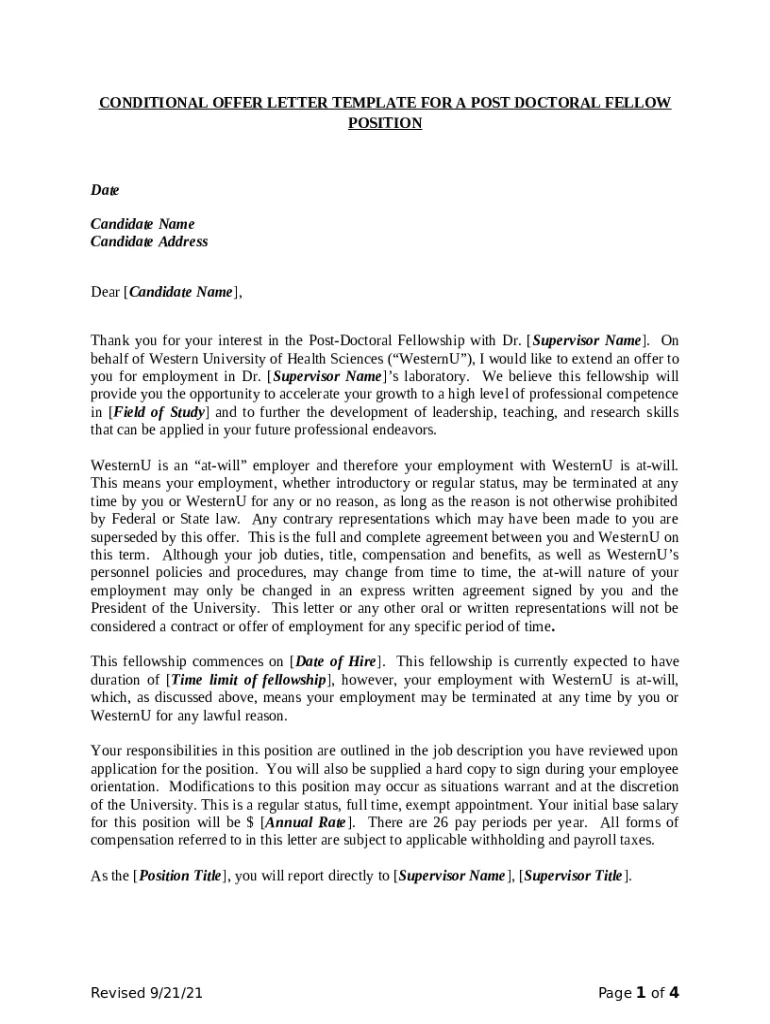What Is a Postdoc Cover Letter
A postdoc cover letter is a crucial document in your application for a postdoctoral research position. It serves as your introduction to the hiring committee, providing an opportunity to showcase your qualifications, research experience, and why you’re the ideal candidate. Unlike a resume or CV, which offer a factual account of your career, a cover letter allows you to articulate your motivations, career goals, and how your skills align with the specific position and research group. This document should be carefully crafted to highlight your unique strengths and demonstrate your enthusiasm for the opportunity. It’s more than just a formality; it’s a strategic tool to make a strong first impression and significantly increase your chances of getting hired. Remember, the goal is to grab their attention from the outset.
Why You Need a Stellar Postdoc Cover Letter
A well-written postdoc cover letter is not just a formality; it’s a pivotal element in securing your desired position. It provides a platform to distinguish yourself from other applicants and demonstrate your genuine interest in the specific research opportunity. A compelling cover letter convinces the hiring committee that you have the requisite skills and that you are a good fit for the lab environment. It offers a chance to articulate your research interests in a clear and concise manner and to contextualize your past experiences within the scope of the prospective role. In a competitive field, a standout cover letter is essential for making a positive impression and moving forward in the application process.
Understanding the Purpose
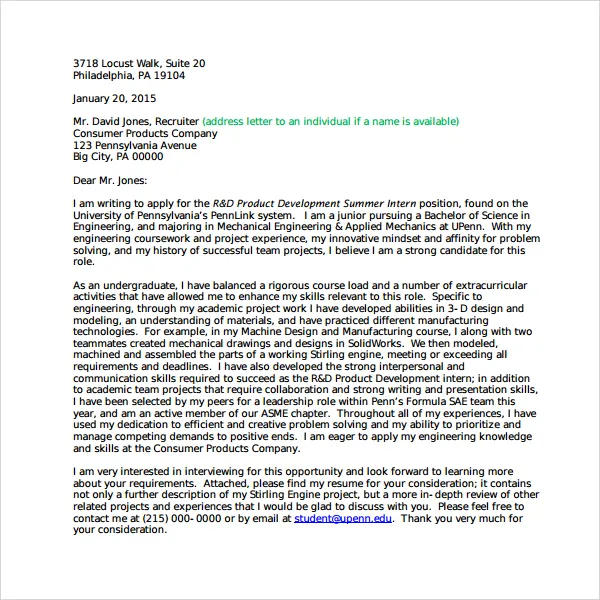
The primary purpose of a postdoc cover letter is to persuade the reader that you are a suitable candidate for the position. It should convey your research accomplishments, skills, and how they align with the advertised role and the research group’s objectives. A well-structured cover letter explains your motivations for applying and why the specific opportunity is of interest to you. It’s also a place to highlight your soft skills, such as teamwork, communication, and leadership abilities. By clearly stating your career goals and how the postdoc aligns with your aspirations, you demonstrate that you are serious about your future in research. Ultimately, the purpose is to encourage the reader to invite you for an interview.
Highlighting Your Skills
Your cover letter is the perfect place to showcase the skills you have developed over the course of your academic and research career. This includes both technical skills, like specific lab techniques or software proficiencies, and transferable skills, such as project management, data analysis, and scientific writing. It’s important to tailor the skills mentioned to match the requirements outlined in the job description. Provide specific examples of how you have utilized these skills in previous projects or roles and highlight achievements where possible. By clearly demonstrating your ability to contribute to the research group, you show that you are well-prepared for the responsibilities of the postdoc position.
Key Components of a Postdoc Cover Letter
A successful postdoc cover letter comprises several key components, each serving a specific purpose. The structure should be logical and flow smoothly, guiding the reader through your qualifications and motivations. A well-crafted letter presents you as a serious and competent candidate. It will have a clear introduction, well-structured body paragraphs, and a compelling conclusion. It is always useful to follow samples for writing. Attention to detail and careful proofreading are essential to ensure the letter is error-free and professionally presented. It must create a positive impression that is very important for your application.
Contact Information & Salutation
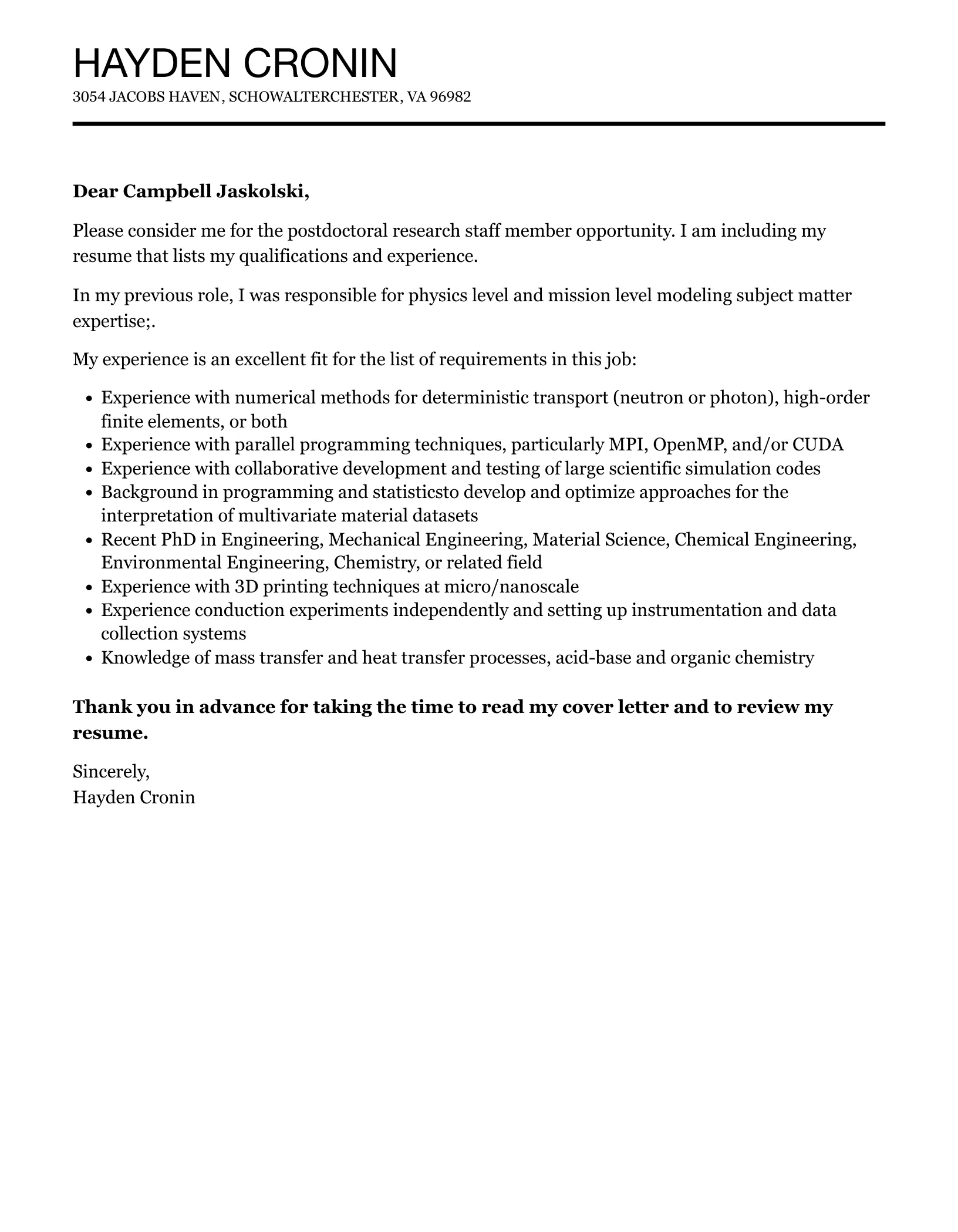
Begin your cover letter with your contact information: your full name, address, phone number, and email address. This should be clearly displayed at the top of the letter. Always address the letter to the specific person mentioned in the job posting. If no specific name is given, research the lab and address the letter to the principal investigator or the hiring committee. Use a professional salutation, such as “Dear Dr. [Last Name],” or, if the name isn’t known, “Dear Hiring Committee.” This demonstrates respect and attention to detail from the start.
Introduction: Grab Their Attention
The introduction is your opportunity to make a strong first impression. Start by stating the position you are applying for and where you found the job posting. Briefly introduce yourself and your research interests. To immediately capture the reader’s attention, mention something specific that you admire about the research group or the professor’s work. You might also briefly highlight a key achievement or skill that makes you stand out. The goal is to convey your enthusiasm for the opportunity and demonstrate that you have done your homework and understand what the lab does.
Body Paragraphs: Showcase Your Fit
The body of your cover letter is where you provide details about your qualifications and how they align with the requirements of the postdoc position. Organize your body paragraphs to highlight your relevant research experience, skills, and accomplishments. Tailor your content to match the job description and the research focus of the lab. Provide specific examples of how your past projects have prepared you for the challenges of the position. Showcase your research interests and how they align with the ongoing work within the lab. Demonstrate that you have the skills and the experience necessary to contribute meaningfully to the team.
Highlighting Research Experience
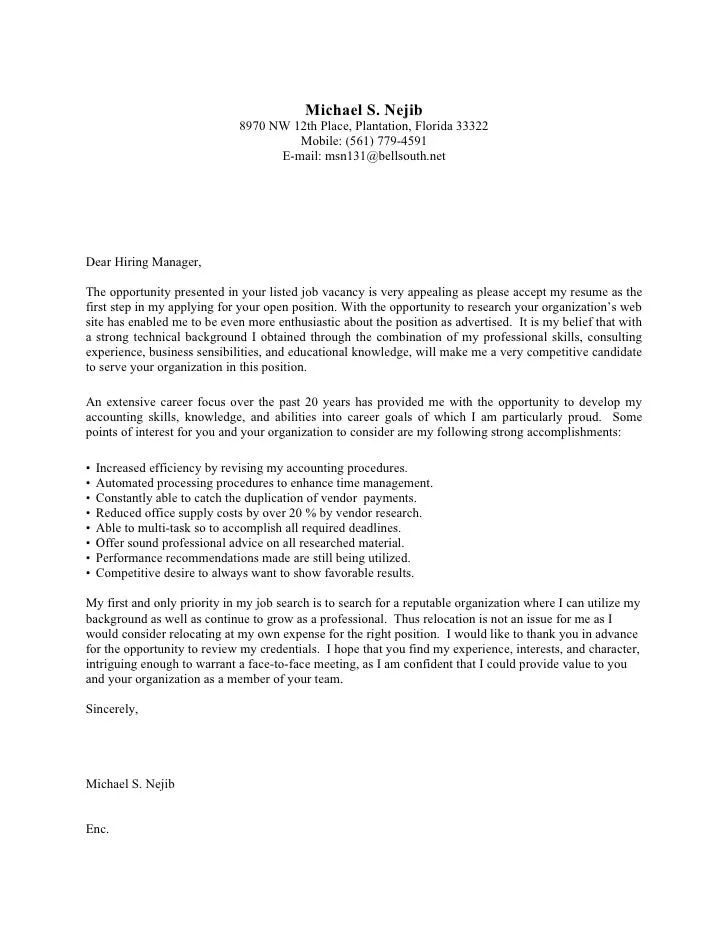
Provide a detailed overview of your research experience, highlighting the key projects you’ve worked on. Explain your role in each project, including your responsibilities and the techniques you employed. Emphasize your contributions to the project’s successes, such as publications, presentations, or significant findings. Quantify your achievements whenever possible, such as the number of publications, grants awarded, or presentations given. Show that you have experience in relevant methodologies, techniques, and areas of study. Tailor your description of your research experience to match the specific requirements and interests outlined in the job posting, showing that you are a strong fit for the position.
Emphasizing Publications & Presentations
Publications and presentations are crucial indicators of your research productivity and ability to communicate your findings. Clearly list your publications, including the journal name, year, and if possible, your role (e.g., first author, co-author). Highlight any presentations you’ve given at conferences or seminars. Emphasize the impact of your publications and presentations, such as high citation counts or awards received. If your publication or presentation aligns perfectly with the research direction of the lab, draw attention to it. Showcase your communication skills and your ability to disseminate your findings effectively within the scientific community.
Showcasing Relevant Skills
Identify and showcase the skills that are relevant to the postdoc position. This includes technical skills (e.g., specific laboratory techniques, software proficiency) and transferable skills (e.g., project management, data analysis, scientific writing). Provide specific examples of how you have used these skills in your previous research. If the job posting emphasizes certain skills, make sure to highlight how you possess them. Quantify your skill levels whenever possible (e.g., “proficient in R programming” or “experience with Western blotting”). Showing a well-rounded skill set strengthens your application and demonstrates your ability to succeed in the role.
Closing: Call to Action & Gratitude
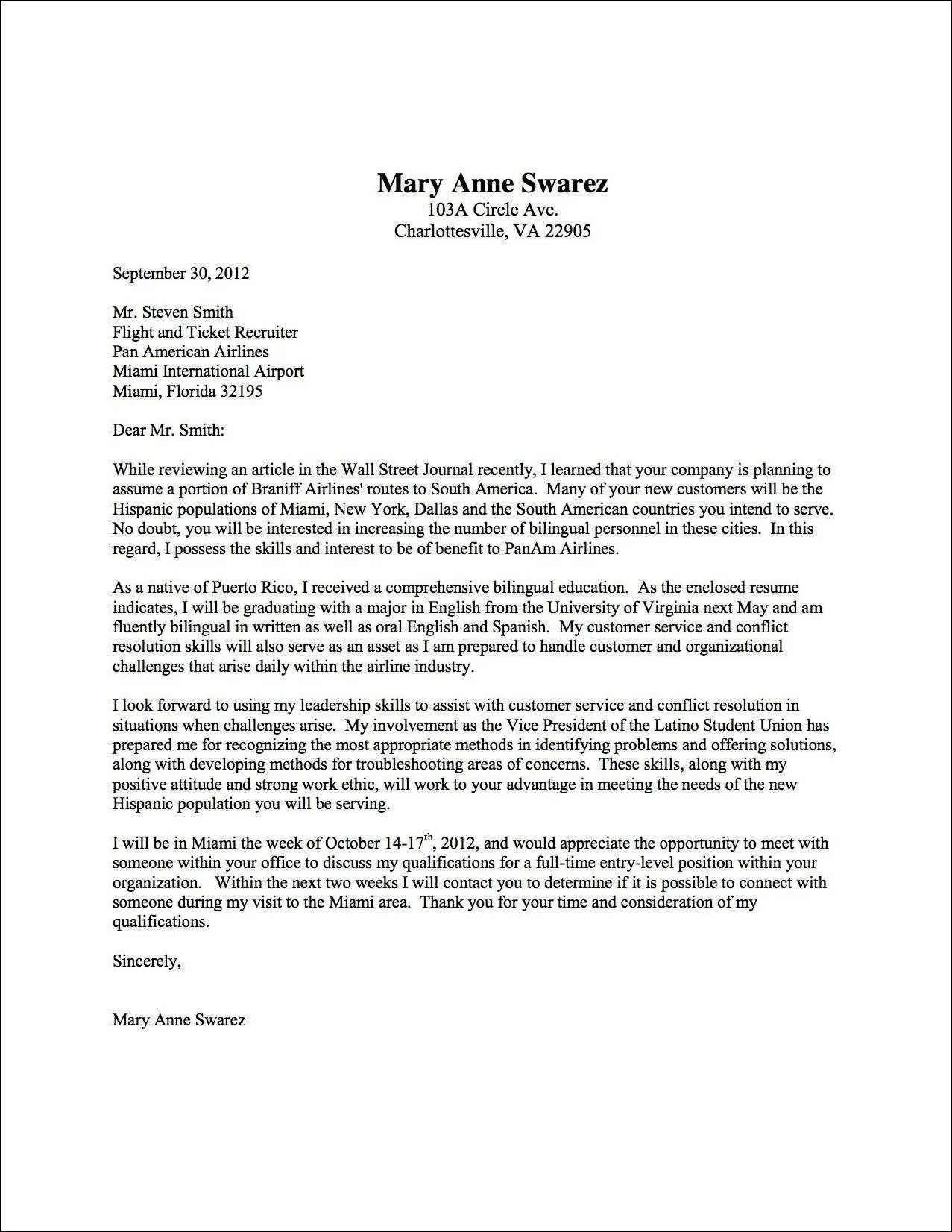
In your closing paragraph, reiterate your interest in the position and express your enthusiasm for the opportunity. Summarize why you believe you are a good fit, highlighting your key strengths and how they align with the lab’s research. Include a call to action, such as stating your availability for an interview and your willingness to discuss your application further. Express your gratitude to the hiring committee for considering your application. Thank the hiring manager for their time and acknowledge the opportunity to contribute to their research. A professional and polite closing paragraph leaves a positive final impression.
How to Tailor Your Cover Letter
Customizing your cover letter is essential for demonstrating your genuine interest in the specific position and institution. Avoid using a generic template; instead, research the lab, the research group, and the professor to whom you are applying. This will demonstrate your commitment to the opportunity and make a positive impact on the hiring team. The most successful cover letters are specifically written to match the criteria and focus of the job posting, with a tailored focus on what you can bring to the table. This approach distinguishes your application and shows that you understand the nuances of the position.
Research the Institution & Professor
Before writing your cover letter, thoroughly research the institution and the professor you are applying to work with. Visit the university’s website to learn about its research focus and the professor’s specific projects. Read the professor’s recent publications to gain a deeper understanding of their research interests and contributions. This demonstrates your genuine interest in their work. Use this information to tailor your cover letter to the lab’s specific needs and interests, highlighting how your skills and experiences align with their research goals. Mentioning specific research projects or publications shows you’ve done your homework and that you are a good fit for the role.
Match Skills to Requirements
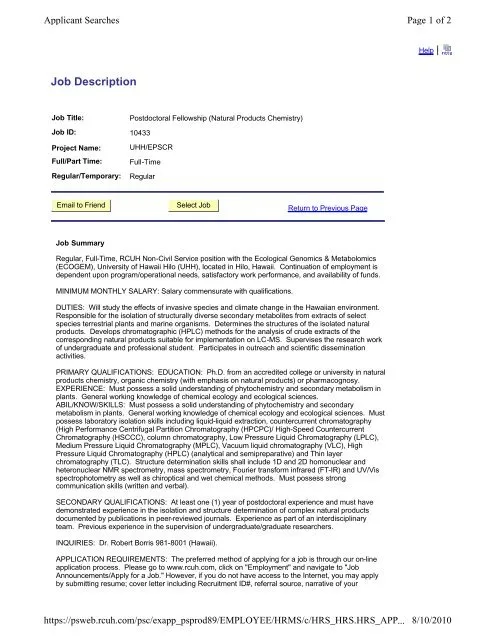
Carefully review the job description and identify the required skills and qualifications. Then, clearly align your skills and experiences with the job requirements in your cover letter. Use the same keywords and terminology that the hiring committee used in the job posting to demonstrate your understanding of their needs. Provide specific examples of how you have applied these skills in previous projects, and quantify your accomplishments whenever possible. By clearly demonstrating how your skills match the role, you will significantly increase your chances of getting hired and help the hiring team see you as the right candidate.
Proofreading and Editing
Proofreading and editing are critical steps to ensure your cover letter is free of errors and professional. Carefully review the cover letter for any grammatical errors, spelling mistakes, and typos. Ask a colleague, mentor, or career advisor to review your cover letter for clarity, coherence, and overall effectiveness. The quality of your writing reflects your attention to detail and professionalism. Always review your cover letter multiple times, preferably with a fresh perspective, to catch any errors you may have missed. A polished cover letter that is free of errors will make a great impression.
Postdoc Cover Letter Sample: Key Takeaways
A strong postdoc cover letter showcases your qualifications and provides context to your application. Tailor your letter to the specific position, highlighting your skills and research experience. Emphasize your achievements with quantitative data, such as publications, presentations, and grants. Clearly state your career goals and express your enthusiasm for the opportunity. Make sure that your letter is easy to read, with a clear structure, and that it effectively conveys your strengths and your interest in the specific research project and lab. A well-crafted cover letter can significantly increase your chances of getting hired.
Common Mistakes to Avoid

Avoiding common mistakes in your postdoc cover letter is critical for making a positive impression. A well-crafted cover letter will have a clear message, with no errors. It must focus on how your qualifications and research experience can contribute to the lab’s goals. Do not use generic templates, as they will make your application seem less personal and will demonstrate a lack of interest in the particular position. By addressing these points, you’ll give yourself the best chance of being selected for an interview.
Generic Letters
Using generic cover letters is a major mistake, as it shows a lack of interest and preparation. Generic letters are not tailored to the specific position or institution, demonstrating that you have not taken the time to research the lab. Always personalize your cover letter to match the specific job requirements and the research focus of the lab you’re applying to. Highlight how your skills and experiences align with the position, and show your genuine interest in contributing to the lab’s research. Avoid generic phrases and instead write a letter that is specific to the opportunity.
Typos and Grammatical Errors
Typos and grammatical errors can undermine your credibility and professionalism. These errors can distract the reader from your qualifications and may make you appear careless. Always proofread your cover letter carefully, and ask a trusted colleague or mentor to review it for any errors. A well-written, error-free cover letter conveys attention to detail and professionalism and creates a favorable impression. Proofread, edit, and proofread again to ensure that your writing is polished and professional.
Failing to Highlight Achievements
Failing to highlight your accomplishments is a missed opportunity. Don’t simply list your responsibilities; quantify your achievements and their impact. Include specific examples of your research successes, such as publications, presentations, grants, or awards. Use numbers and data to demonstrate the results of your research and how you have contributed to the scientific community. Emphasizing your achievements shows the hiring committee that you are a high-achieving, effective researcher who is eager to contribute to the team.
Resources for Postdoc Cover Letters
There are various resources available to help you craft a compelling postdoc cover letter. Online, you can find sample cover letters, templates, and guides that provide advice on structure, content, and best practices. Career services offices at universities often offer cover letter review services and workshops. Seek guidance from mentors, professors, and experienced researchers who can provide feedback on your cover letter. These resources can help you tailor your letter, highlight your strengths, and make a favorable impression on the hiring committee. Take advantage of all available resources and create a powerful application.
